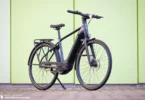Ebikes are experiencing radical change, while simultaneously becoming a status symbol. Digital integration is making life easier and bikes more exciting than they’ve ever been! We’ve put together the most important ebike trends of 2021 for you here.
Whether you’re battling your way through the city jungle or call a house in the countryside your own, ebikes are currently shaping urban mobility. Innovative bike concepts are providing more fun, safety and improving quality of life. While ebikes have already had some time to grow up, the latest developments give the bikes of the future a whole new face. In the context of a modern mixture of mobility solutions, ebikes will have a key role to play. Our big group test of 19 models has delivered well-founded insights far beyond the ebike cosmos, which we want to present to you in combination with a look at the ebike trends of the future. Curtains up: this is what mobility will look like!
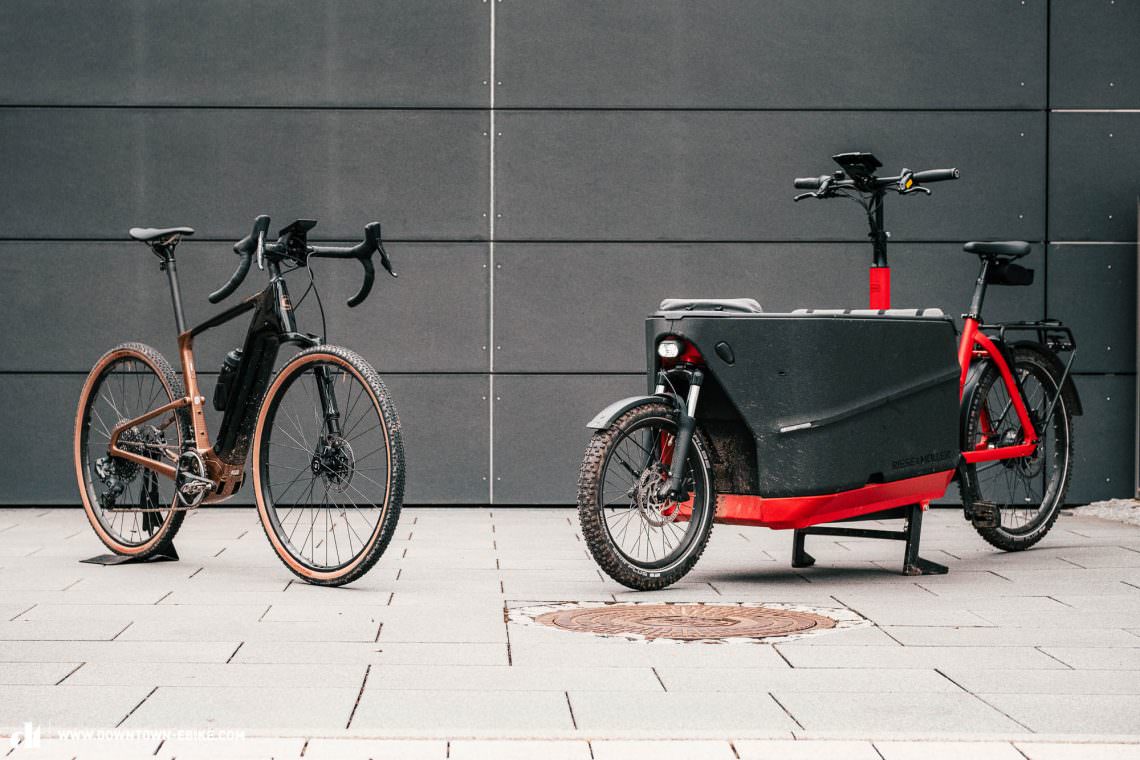
1. Ebikes undergoing radical change – The ebike of the future doesn’t have much to do with the classic bike.
Differentiated and focussed ebike concepts instead of the same old two-wheeled thing – that’s what bike development promises for the coming years. In the past, you just about had the choice between a classic diamond frame and step-through bikes. The choices only really set themselves apart from each other in terms of usability rather than where they could be used. The ebikes of the future are doing things differently, setting themselves apart with their individual functionality. Today, more wide-reaching considerations are made when designing bikes, rather than just designating them into the two drawers of step-through and traditional. This primarily concerns satisfying the requirement of an ever larger and diverse bike community. One or two types of bikes are no longer sufficient!
The market is becoming more diverse and the new generation of urban ebikes reflects current automobile trends. Surprising? Hardly. After all, in Germany at least hardly any other sector has as much of an influence on how we travel. The bikes in our group test can also be divided into three categories. Without a doubt, both the Riese & Müller Homage and Moustache Samedi belong to the category of SUVs. They are increasingly drawing inspiration from the eMTB sector, roll on treaded tires, and feel safe and secure to ride through the urban landscape. The second category of Minis, Smarts and other compact vehicles is filled with concepts like the VanMoof, Movea Modo or the Brompton M6L. They shine while riding winding streets in the city centre, being taken onto public transport and for being easy to park. The counterpart to these is provided by the category of vans and transporters, in which cargo heroes like the R&M Packster 70 feel right at home. Regardless of whether you’re riding to the market, commuting to work or picking up your kids, in the future, these bikes will have an enormous role to play in transporting the most important things in our lives and making at least some cars obsolete.
As you can see, bike manufacturers don’t have an easy task ahead of them – it will definitely be an exciting one though! Ebikes have to be rethought in terms of their functionality and design, to meet the needs and demands of new and existing markets. An urban bike of the future shouldn’t just be able to ride from A to B. Features like comfort, weather protection or even extravagant desires like heated seats or grips should all be considered. The next stage of evolution is already in the starting blocks. The marriage of visual and functional plans for the future has already begun and is resulting in a new generation of ebikes that provide a tangible benefit in everyday life and deliver solutions for specific mobility requirements. Enough with the same old two-wheeled mish-mash!

2. Ebikes as an urban status symbol – The brand, its values and brand recognition are becoming more and more important.
In the past, if you didn’t work in the bike sector, it was hard to tell different manufacturer’s bikes apart. Now more and more people identify with the brand emblazoned on the frame underneath them. A bike like the Schindelhauer Arthur is a statement and the decision to buy and ride this ebike will be a conscious one. During one of our testing sessions, a young schoolboy actually exclaimed to his mum, “Mum, look. A VanMoof!” That says a lot about the memorability of today’s urban bikes and strong brand identities. It’s less about individual components than it is about the overall concept and associated lifestyle. A perfect example that ebikes have already found a place with the lifestyle brand filled youth and in pop culture, is the Stuttgarter eMTB gang with their MERIDA ebikes. Nonetheless, there’s no question that not every brand has come as far yet. As such, it’s not surprising that Bosch are more often connected with ebikes and the values and image that come along with that, than the brands themselves.
Ebikes have been accepted into popular culture and replaced the car on the must-have list long ago. Ebiking is tight, Diggi!
There are also parallels to the automobile sector in terms of bikes as a status symbol. Often, image, values and the lifestyle of the person on the ebike are the deciding factors. Certain bike brands say a lot about who owns them. The best examples from our group test have to be the FEDDZ and Brompton. Of course, these aren’t rules that are set in stone, but we’re also sure that a chance encounter of 50 Brompton fans will result in lifelong friendships within the first half-hour. One development that could be of some importance for the urban bike sector is the jump of performance-oriented bike brands into the turbulent flow of the mobility mainstream. Regardless of whether it’s the brand positioning itself in the market or wanting to expand its portfolio, it’s guaranteed to be a benefit to the sector. The best example of this is the Canyon Future Mobility Concept. “You are what you eat,” is yesterday’s news. Today, it’s all about, “You are how you move.”
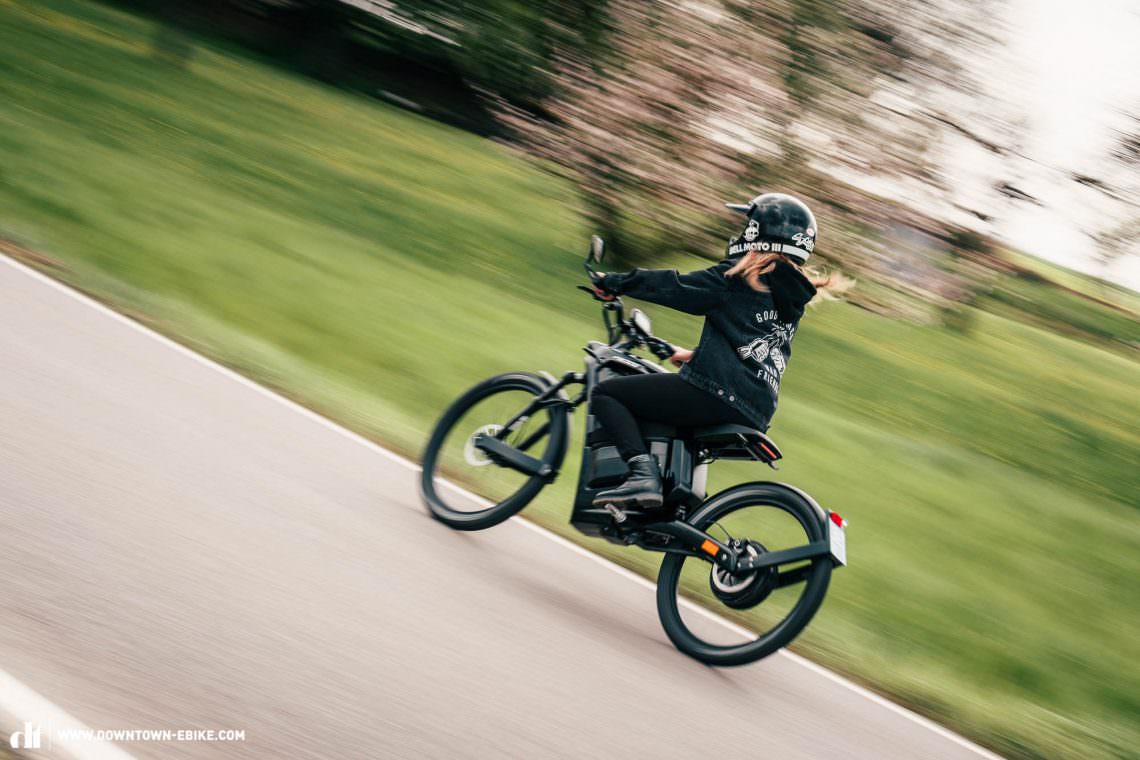
3. Sharing is caring
If you’ve read up to this point you’ll realise that urban mobility is increasingly defined by the vehicle with which you’re travelling. The utility and journey are moving more into the foreground as a process themselves – particularly after the last few months of lockdown you travel much more consciously. Rideshares fit in there perfectly, don’t they? In the past, the term mobility primarily represented getting from point A to B. Today it’s much more about the process of being mobile and correspondingly, there are many more alternatives suitable for everyday use. That encompasses the almost daily Zoom call which, apart from the distance between your bed and desk, requires no mobility at all (and part of our editorial team even question how important that is), all the way to the question of how you want to get around outside and how that can become an experience. Stuck in the avalanche of tin cans during rush hour or clearing your head on the cycle path? Decisions about how we move are being made more consciously than ever before and sharing models offer a contemporary option.
The fact is that a bike often has just as long periods of inactivity as a car and it’s important to minimise these sensibly. Exactly this process is already happening in many households and families and will play an ever-greater role in the future. Public sharing is all well and good, but sharing within a family is even more effective. After mum has commuted with the ebike to work during the day, the daughter uses it in the evening, while the son takes charge of it on the weekend. A bike is a bit like a clock. It never belongs to you alone. Of course, that means it’s important that size and ergonomics can be easily and quickly adjusted. The Riese & Müller Packster 70 demonstrates what’s what: you can easily adjust the seatpost and bar height with a practical quick-release. But a wide range of applications is also crucial to be equipped for all scenarios and family members. We’re sure that all-rounders have a promising future ahead of them! Technologically, everything can now be put into practice without issues and the demand from riders for features is there. Thinking in bike categories is an approach that is no longer necessary thanks to the diversity of today’s urban ebikes. Instead, you should think in terms of applications: a bike for everything and everyone, instead of five bikes and more (or N+1), as bike freaks always claim they need.
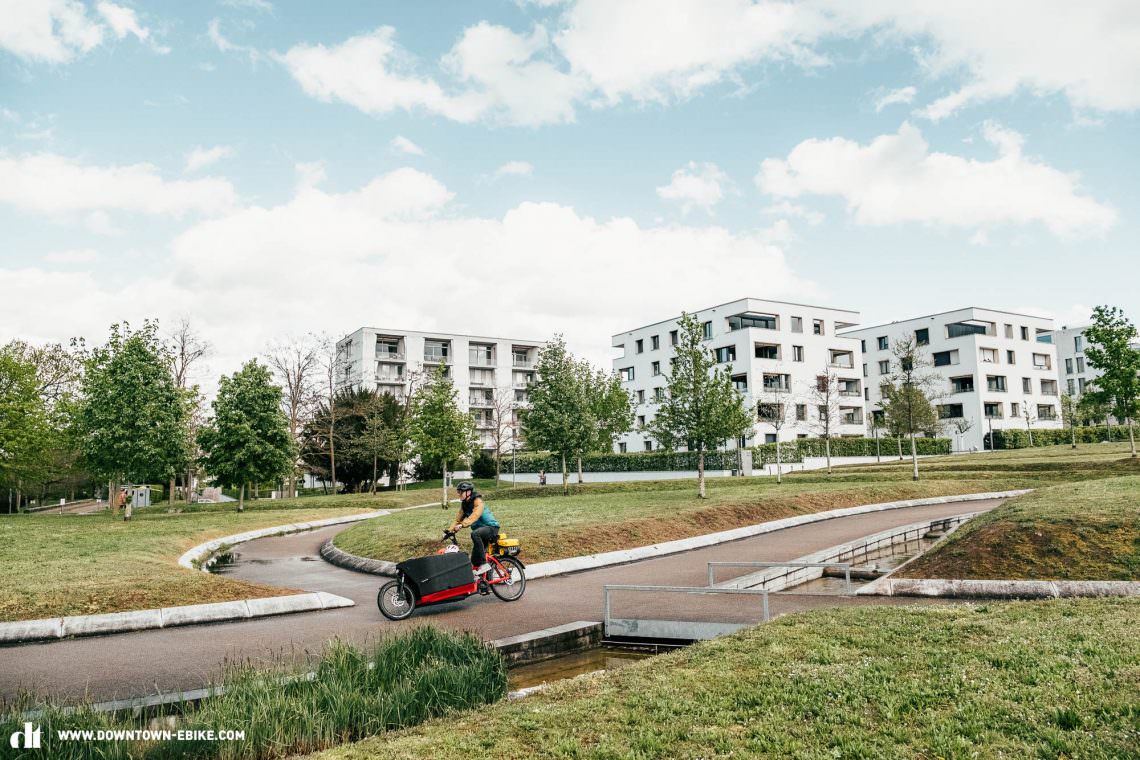
4. Connectivity – Connecting people?
Connectivity is playing an ever more important role in the development of urban ebikes and is now perfectly integrated into the overall bike concept by many bike manufacturers. From our point of view, sensible connectivity features offer direct and increased value for everyday use and leisure use on the weekend. Both safety but also luxury features play a big role here. Reliable navigation functionality doesn’t just help in the city on the search for the closest artisanal bakery but also lets you ride your tour on the weekend without stress or having to remember your way to that one secret bathing spot. Nowadays, flexibility is the main focus and thanks to GoogleMaps, exploring new places is stress-free. Indeed, it often works better than the integrated sat-nav in your car! Bosch set one example after another with the Nyon display and the SmartphoneHub. Noteworthy is the intelligent range estimation of the Nyon display which takes into account the range and remaining battery charge when planning your route. If you’ve already stored your destinations in your Nyon display, you can even navigate without ever having to remove your hand from the bars. Great!
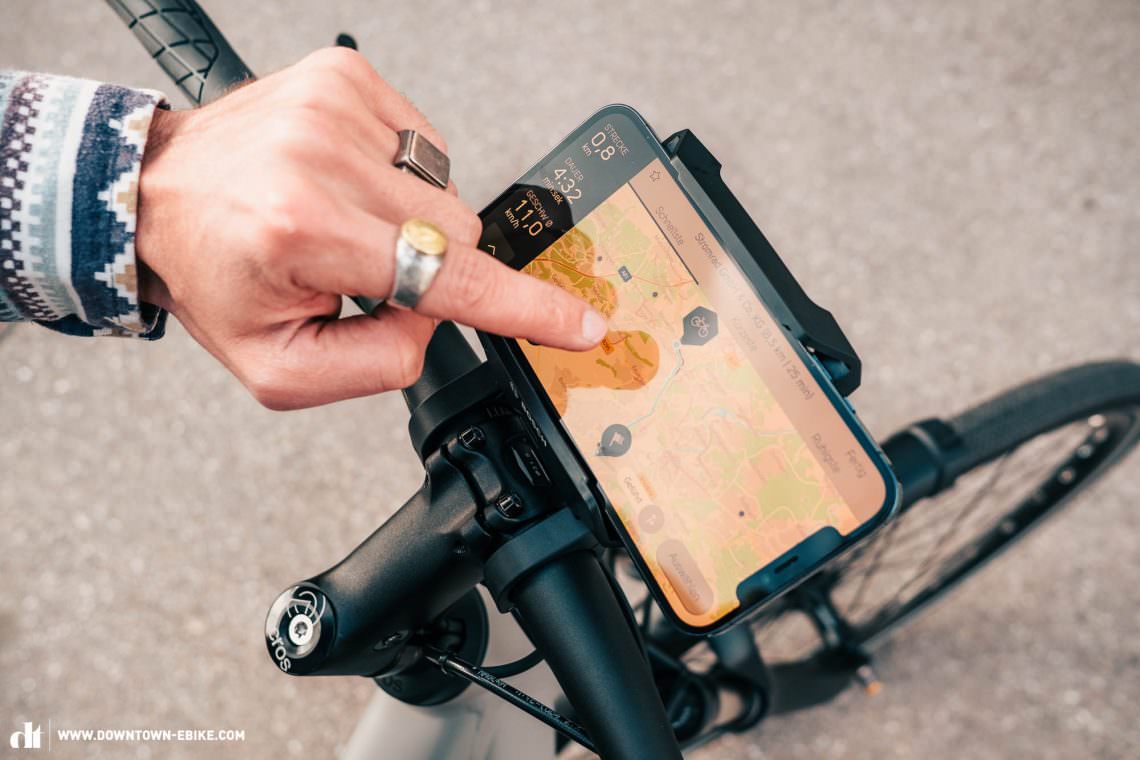
With GoogleMaps, ebikes often offer better navigation than most cars – and that works significantly better directly on the iPhone than it does via Apple CarPlay and the like!
A further highlight is Bosch’s COBI.Bike app, which now offers even more features. Amongst other things, the new and free Rydies functionality helps you find the closest public charging point. But even without a SmartphoneHub, your smartphone can be used as an intelligent control centre for your cockpit. Thanks to connectivity features, ebikes are getting a whole new lease of life and social aspects are becoming more important. The route-planning app Komoot can recommend routes and attractions provided by other people on the platform. You simply choose a route, ride it and share it with the community afterwards. Bike brands like VanMoof elevate smart features like integrated theft protection to a whole new level and show where things are going in their segment. Nowadays, lots of bikes offer the option to control the motor and assistance modes via an app. Riders who use their urban ebike as sports equipment will also enjoy app functionality that offers training optimisation.
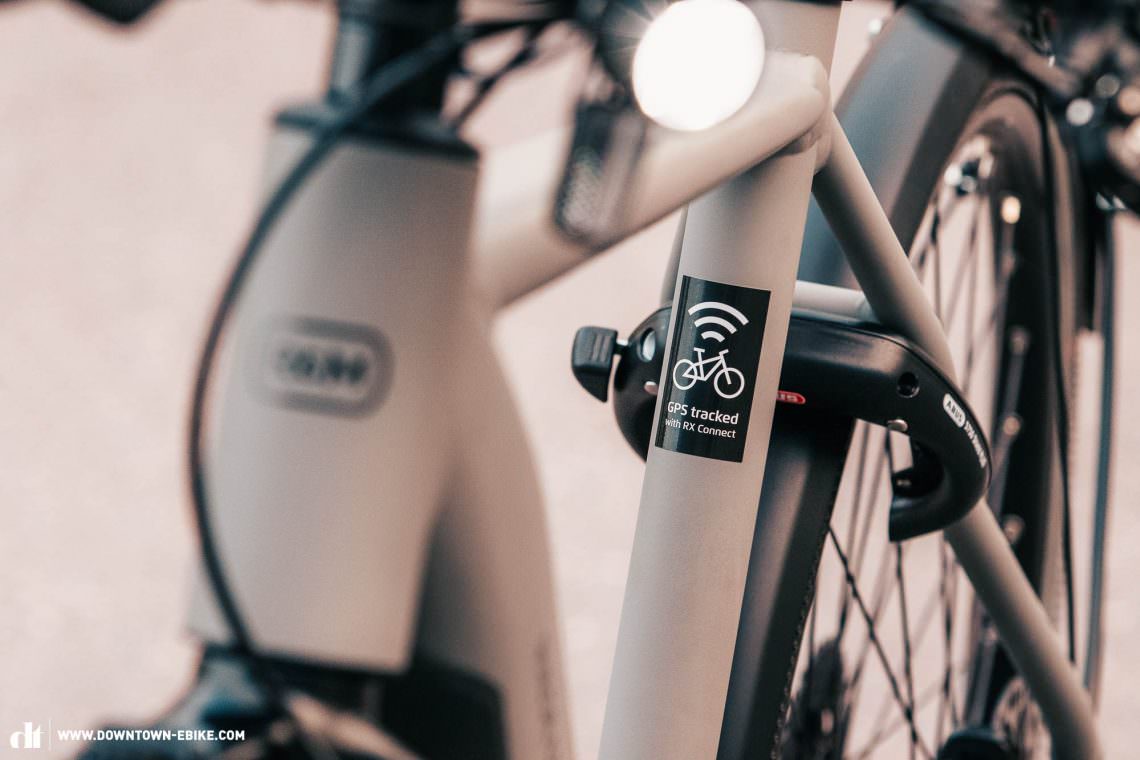
5. Theft protection 2.0 – Why it will be even more stupid to steal ebikes in the future
How nice would a world be where you don’t have to lock your bike outside the bakery while you get bread? The sad news is that there will continue to be sneaking hands waiting to take your expensive ebike with them. However, the good news is that numerous manufacturers have already developed theft protection that makes physically locking your bike unnecessary. The best examples are Riese & Müller with the RX Connect system and GPS locator, as well as VanMoof with their physical and acoustic theft protection. Additional feature: if your bike does get stolen, both Riese & Müller and VanMoof will recover your bike or replace it, as long as you’ve purchased the matching subscription or security package. For a modern bike with a Bosch motor, it’s also possible to remove the display and pair it with the specific bike, meaning the motor can no longer be activated with other displays attached.
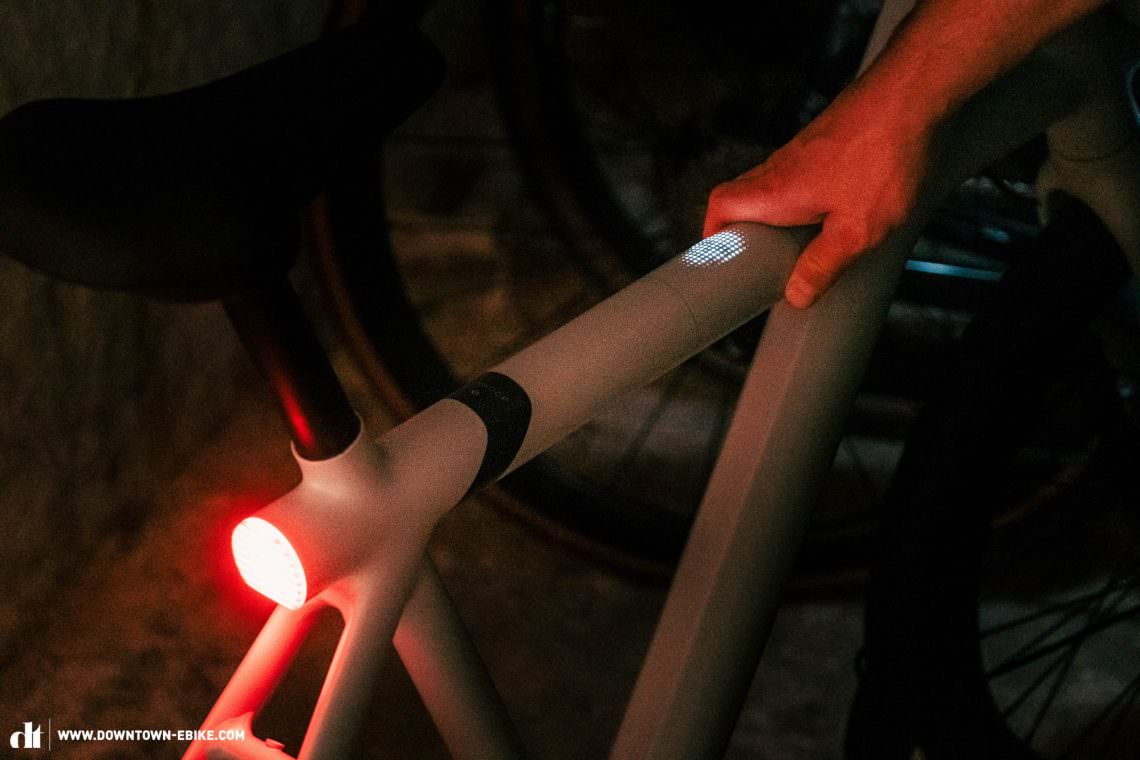
You don’t steal a VanMoof. Like a Tesla, it is able to send its location. It’s similar for ebikes from Stromer or Riese & Müller.
But that’s not all when it comes to connectivity features that offer innovative insurance or service and recovery concepts. As an example, the Vodafone Curve rear light with an integrated SIM card and smart GPS tracker. You just have to subscribe to a data package and can track your bike more easily than ever before. One thing’s for sure: due to the large demand for further intelligent solutions for securing your expensive bike, there will be numerous developments in the future that will make your life easier and cost criminals their jobs. We’re excited!
Would you subscribe to a data plan for your rear light? No? There are good reasons for doing so though!
Nonetheless, physical security measures can’t hurt and in this group test, many bikes come with a separate or integrated lock, Hexlox component security or security bolts that can only be unscrewed with special tools. Overall, it’s a clever mix of security concepts that are the be-all and end-all of unimpeded riding fun. On top of that, you should first figure out for yourself where you keep your bike overnight and how often you want to leave it out in the open.
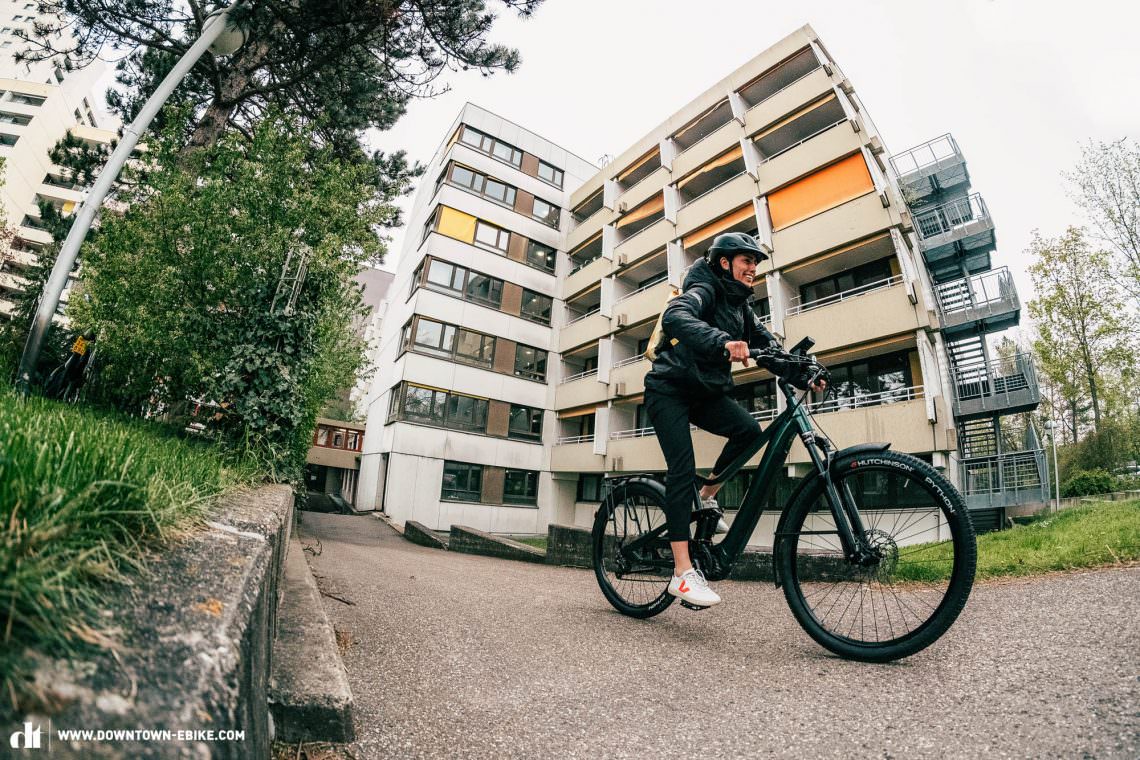
6. SUV ebikes – eMTB technology is moving into the city
More and more SUV ebikes are on the streets, like the Riese & Müller Homage or the Moustache Samedi from our big ebike group test, rolling in with full-suspension and other technologies from the eMTB sector. The ambitions and characteristics of these bikes can be divided into three aspects: security, image and range of application. Even if rooty trails are swapped for potholes and other irregularities, the SUVs of the ebike sector score lots of points in terms of security. And who hasn’t been thankful for the reserves of tires and suspension over a poorly approached kerb after a few beers (alcohol-free of course, the sole reason was the lack of riding skills)? Wide (mountain bike) tires are also an advantage when riding over gaps and rails, being much less likely to get stuck. While we’re on the topic: the large 29″ tires of the MERIDA eBIG.TOUR roll with a confidence that the small and narrow urban tires of the past would never have thought possible.
The image of large and partly brutish E-SUV bikes will of course also play a role when making a decision. If you’re buying an ebike in this category you don’t want to disappear unnoticed into the traffic. The sporty adventure look of a 4×4 is polarising and ebikes of this kind exude a massive, often unused, off-road potential. Of course, the treaded tires aren’t the quietest on smooth asphalt, but if you ride a calibre of bike like the R&M Homage you don’t necessarily want to be quiet ;). One task that E-SUVs fulfil like almost no other urban bike is the breadth of their application. From everyday riding to weekend tours, all the way to adventures off the beaten track, the bikes do everything you ask of them and reveal themselves as capable all-rounders. The wide tires usually offer great damping and more reserves, while the large range of the drivetrain is equipped for the steepest climbs and the high torque motors with their significant power will push you uphill even when fully loaded with luggage. Of course, a motor with too much power can also be a disadvantage in the city, though it compensates for many of the disadvantages of E-SUVs, like the high rolling resistance of the mountain bike tires.
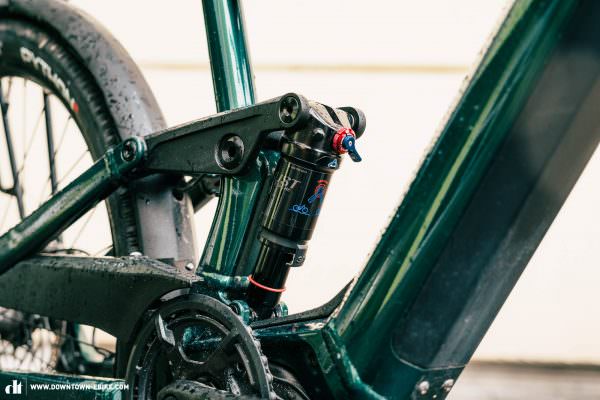

EMTB technology can help elevate the fun, security and style of urban ebikes to a whole new level. During their development, two aspects stand at the forefront: urban bikes need to solve the concrete problems of urban mobility with modern technology. And they shouldn’t just be a development of the same thing that has been tried for years on end. Instead, they are taking inspiration from the performance sector and are figuring out to what extent technologies or fundamental ideas can be transferred. That’s why modern city bikes feature influences and best practices from the eMTB and road bike sector. For example, a full-suspension frame stems from the mountain bike sector but can imbue urban bikes with a lot of comfort. For the Canyon Commuter:ON and Specialized Vado SL, influences from the road sector are easily recognisable and bring a lot of fun to the handling of urban bikes. It’s by no means a blind copy and paste of the successful recipes of other sectors but an intelligent and well-judged adaptation. One thing’s for sure: urban bikes and their development can benefit significantly from this know-how!
Where there’s light, there’s also… potential. However, you still have to accept several compromises in the search for the perfect urban ebike. A full-suspension eMTB can’t be transplanted 1:1 into the city as a perfect E-SUV bike. It is often missing transportation options for shopping and commuting. On top of that, you’ll often end up with issues in stairwells because eMTBs tend to be big and long. Apart from that, most eMTBs come without lights, without mudguards, without protection for your trousers and with wide bars. Here, you’ll have to do some modification to end up with a bike that works for the city and everyday use. Proper SUV ebikes might have some DNA in common with true eMTBs but apart from the look, don’t share all that much. At the latest, you’ll notice this when you head off-road. If you’re on the search for an eMTB to blast along trails, you should read the big eMTB group test in our sister magazine with 25 of the best models of 2021.
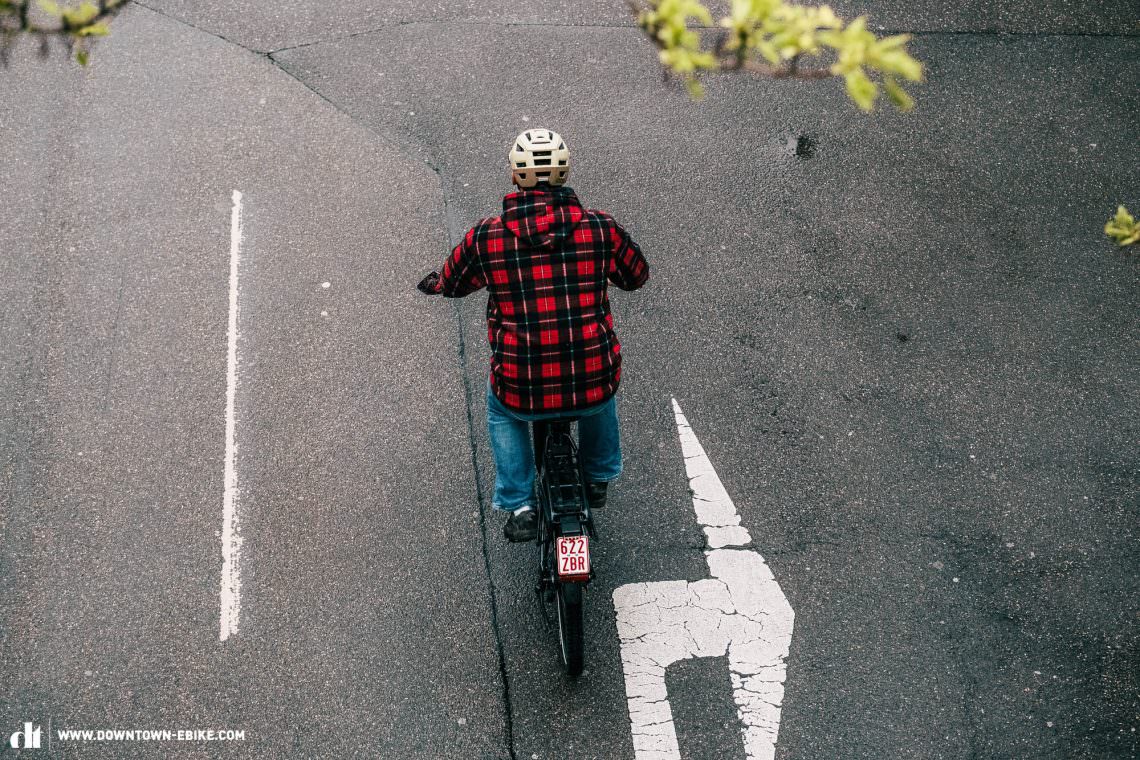
7. S-pedelecs have it hard even though they could represent a brilliant solution for mobility!
S-pedelecs, which provide support up to a speed of 45 km/h, are indispensable to creating lasting change in the daily habits amongst the masses. And once you’ve ridden one of these fleet-footed machines to work, you might no longer want to ride an ebike that cuts out at 25 km/h. You’re just noticeably quicker into town from the suburbs and can reduce a journey that takes an hour down to 40 minutes (as discovered by one of our editorial team). Unfortunately, S-pedelecs have it hard. Many obstacles are placed in the way of these rockets amongst ebikes and in terms of infrastructure, there’s a significant need to catch up. For example, there are still far too few cycle paths that are allowed to be used by S-pedelecs. The mixture of missing infrastructure and a legal status that doesn’t lend itself to practical use, makes life hard for these fast ebikes. New developments on S-pedelecs are also getting harder because the motor transport authority in Germany is constantly coming up with new rules – the road bike fans amongst you should be aware of a similar approach by the UCI! One thing’s clear: something has to change and several bike manufacturers like Riese & Müller have been doing valuable lobbying on an EU level for years. In Switzerland, S-pedelecs are already a part of everyday life and can be seen everywhere. Only this way can rural areas, which naturally entail larger distances, be brought onto the bike in a lasting way!
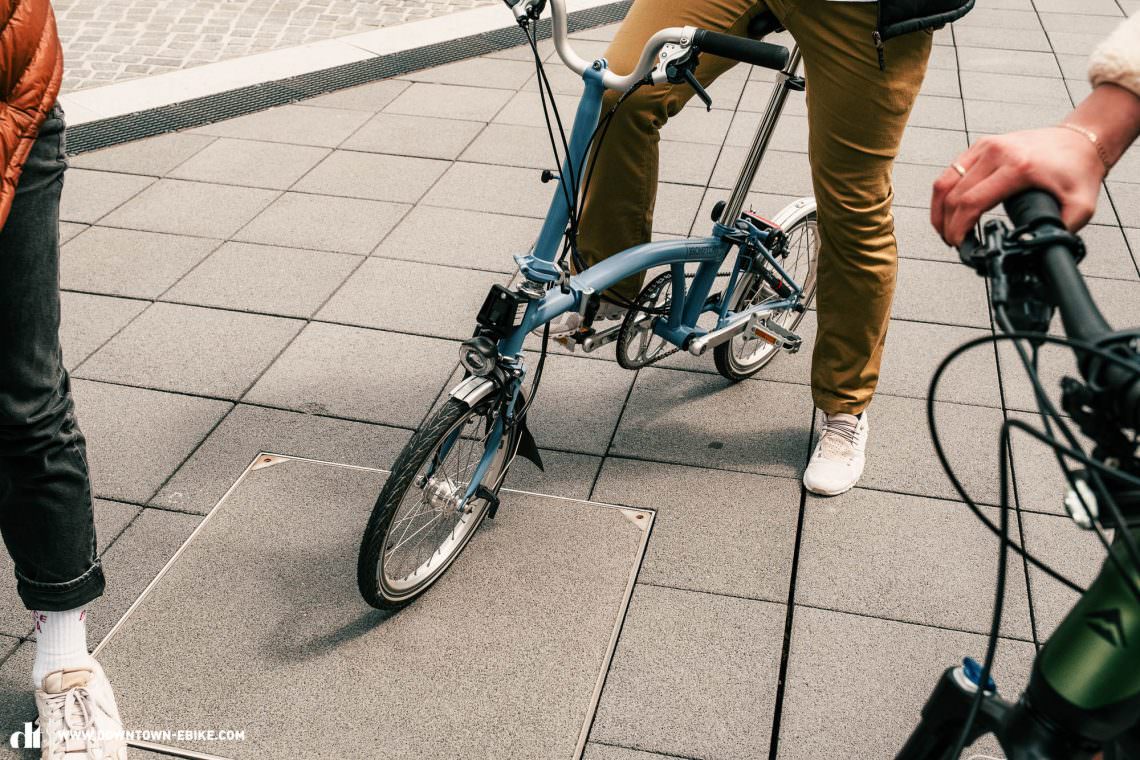
8. Mini und smart – Compact ebikes are conquering city centres
If you look at the vehicles coming past during a walk through the city centre, you’ll notice that Smarts, Minis and the like are overrepresented – that has its reasons. Parking spots that are far too small for most cars don’t pose these little city runners any particular challenges. And if you really need, you just park your vehicle, which is under 2.50 m long, sideways. Exactly the same phenomenon is happening in the ebike sector, with small and manoeuvrable bikes offering the ultimate flexibility in city centres. Hop on, hop off and hop on again: the handling of these bikes when you’re not riding them is extremely important for public transport and small city flats. The unrivalled expert in this group test is the Brompton folding bike. The initial reticence you feel about having to first prepare the bike to ride is mitigated by its brilliant handling. You can find a spot to leave it in the busiest places or you can just take a folding bike like the Brompton into the cafe with you.
The last mile is dead. Long live the compact bike, in every situation!
The special family of compact bikes is made possible by the small wheels, innovative frame designs and progressive developments in the motor sector. 10 years ago, ebikes as small as the Movea Modo or the VanMoof would have been unthinkable. Despite small tires and small wheelbases, manufacturers manage to pack many more functions and practical features into minimal space, and all that with ever better looks. Particularly for flat terrain that’s a great option. You just have to watch out for train tracks and similar obstacles. Finally, it has to be said that these kinds of bikes are just a lot of fun, shine with a brilliant look and are pretty damn sexy!
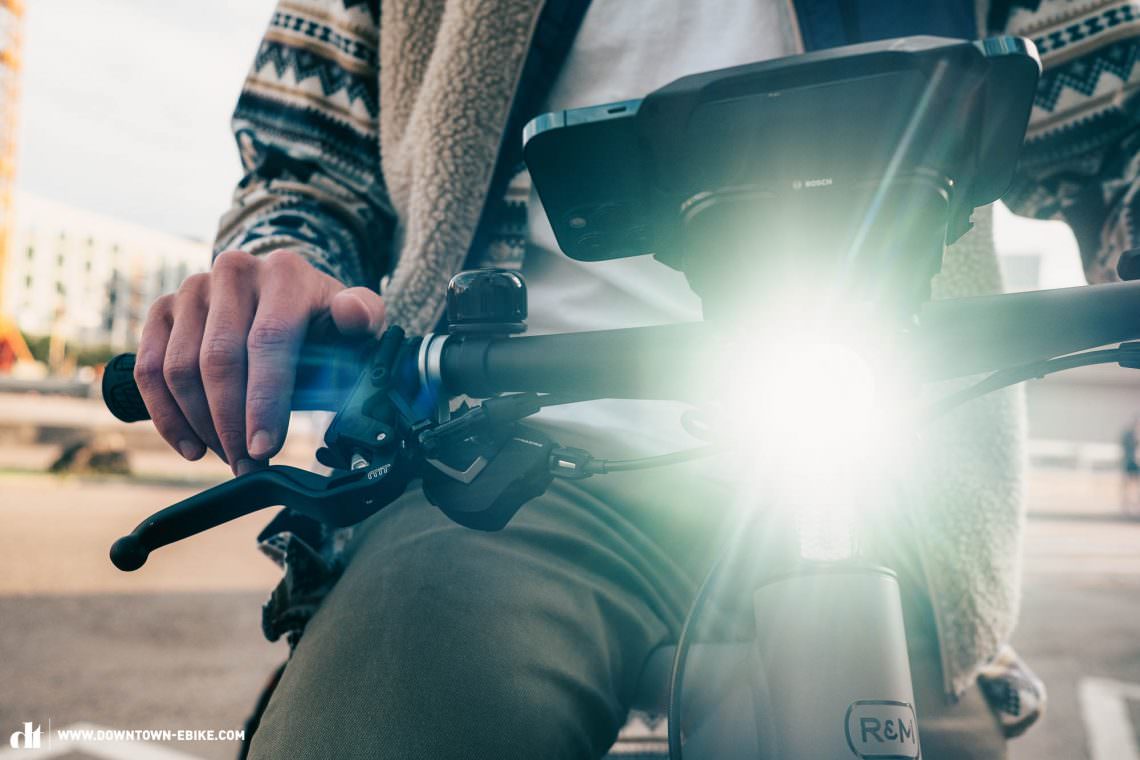
9. Lights are sexy! Lights as a design element and safety feature
In this area, the bike industry has copied a few good things from the automobile sector too. Why not? Headlights shape the faces of cars, give them an expression and are usually the deciding factor when it comes to evaluating the overall look. We’re experiencing the same thing with urban ebikes because thought-through lighting can provide more than just illumination. A light connected to the ebike battery just makes sense, avoiding the need to constantly swap or charge fiddly batteries. Instead of an on and off button, a high- and low-beam is significantly cooler! Successful integration as has been achieved with the Schindelhauer, Ampler or VanMoof is a great thing – the VanMoof even controls the light all on its own via the integrated light sensor! But a bright light like the Supernova headlight on the Riese & Müller Homage is worth its weight in gold for rides in the dark. We would have been happy if more bikes in the group test had arrived with a brake light. After all, it increases safety in traffic quite significantly. Surprisingly, integrated and stylish reflectors like on the Specialized Vado SL haven’t found their way onto more ebikes, though you’ll already find examples of this in the road bike sector, such as the rear end of the Cannondale SuperSix! Being seen and safe in traffic needs sex appeal – staying alive is pretty sexy!
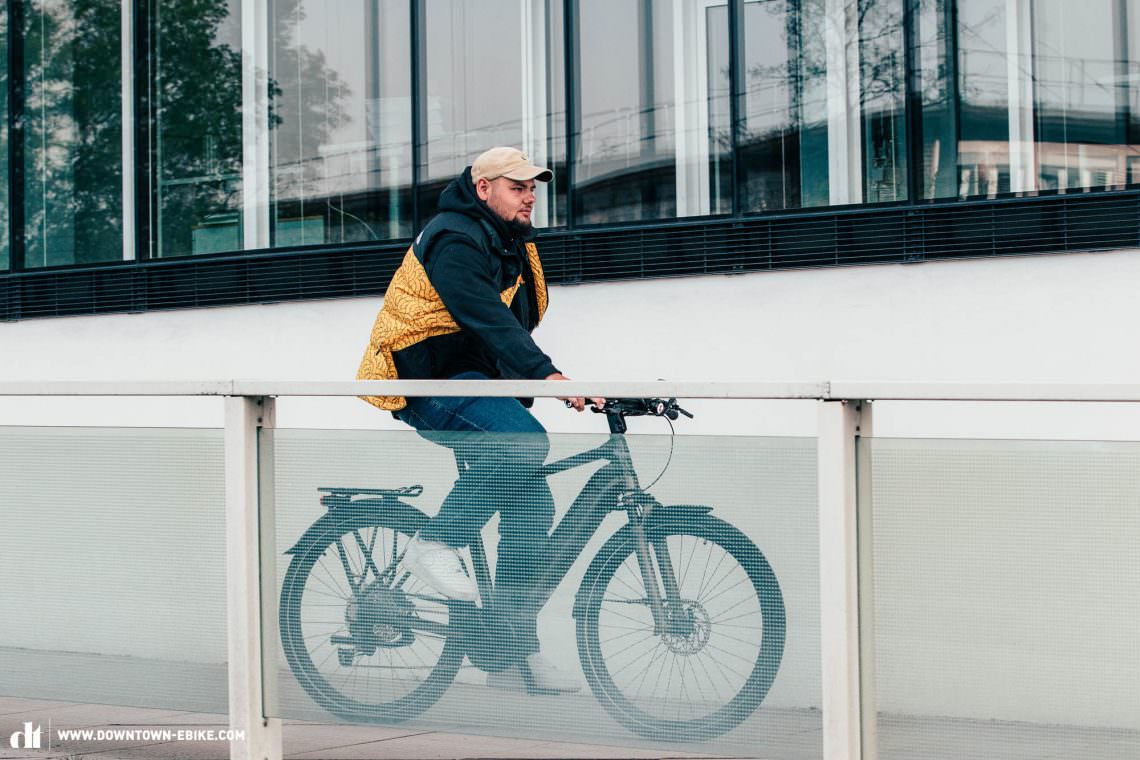
10. Heavy load – The maximum permissible weight of many bikes is hard to justify!
The best example of the issue is the maximum permissible weight of the Haibike Trekking 9. With a rating of 130 kg, a bike weight of 26 kg, a rack fully loaded with 25 kg, only 79 kg remain for the rider in the saddle. Oops! Lots more has to happen here. Of course in the sporty and performance-oriented sectors, that may still be acceptable. However, in the city and every day, 5% body fat can’t be a prerequisite for biking. How can it be that the bike industry has missed the mark here? Are certification tests no longer up to date or is the problem in another area? Often, it’s not even the frame itself that’s the problem but the rating of components like wheels, fork, stem or bars. Even then, the Kalkhoff Endeavour from our group test, which has a high load rating with a maximum permissible weight of 170 kg, didn’t escape unscathed under our 130 kg test rider Jannik, and that after a relatively short time riding. In this area, we see lots of areas for improvement for the development of future bikes and components.

11. Motor power isn’t everything and battery capacity is just as important
Playing car top trumps is something best left to school children for good reason: displacement, battery size and power say relatively little about how good a car actually is! Take the FLYER Upstreet6 S-pedelec, which should be right at the front with a peak output of 825 W. The reality is that with its comparatively low torque of 37 Nm, it throws in the towel at the first serious climbs. For flat cities, a less powerful motor is sufficient and simultaneously requires less energy, allowing smaller batteries to be used and making for a slimmer, lighter and easier to handle ebike. However, for hilly terrain, you need lots of torque, sufficient gear range and a motor that can provide enough support at low cadences too. Once again, our theory that the right motor concept for the right application is the deciding factor, rather than pure motor power, is confirmed. In terms of battery capacity, more isn’t always more. Often you’re just riding around with an unnecessarily large and heavy battery, which can have a significant impact on the handling, whether you’re carrying your bike into the cellar or riding it. The appropriate battery size is heavily dependent on the motor and its consumption. The battery and motor have to fit the overall concept and application of the bike!
Words: Philipp Schwab, Benjamin Topf, Rudolf Fischer Photos: DOWNTOWN editorial team



